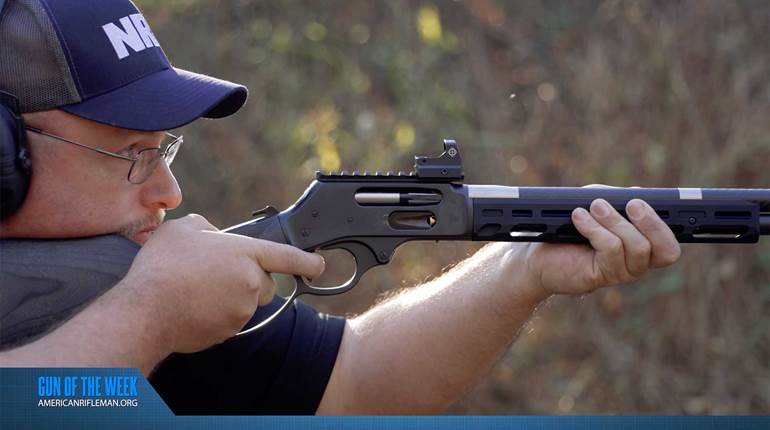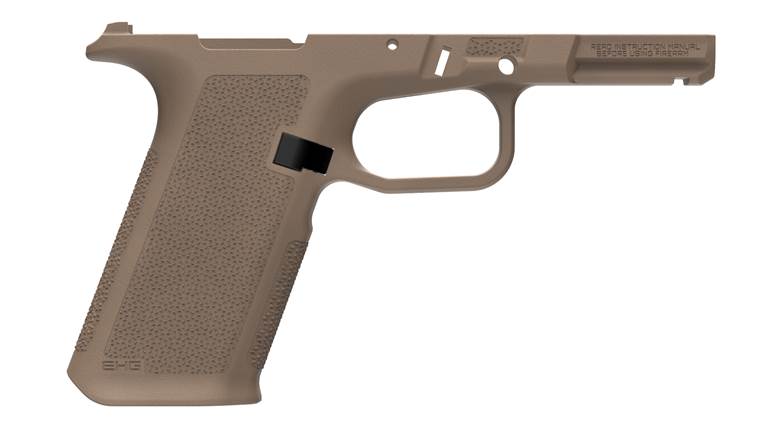
Since the advent of the self-contained metallic cartridge, and the subsequent evolution of firearm design resulting from it, little has changed in the fundamental way in which they interact in more than 100 years. Throughout the 20th century, though, many inventors attempted to approach the concept of the firearm differently than others had before. One such man was David Dardick, who, in 1958, patented his namesake revolver and, later that year, also patented the unique "tround" used by his novel firearm. In the American Rifleman Tech Files, the magazine staff has preserved all the details from Dardick’s earliest marketing attempts.

Though the Dardick handgun, initially available in three models as the Series 2000, Series 1500 and Series 1100, was officially patented in 1958; the public first saw the gun at the NRA Annual Meetings & Exhibits in March 1957. Soon after, in April 1957, details emerged about the new design, its innovative "open-chamber" operating system and the man who had invented it. Termed an "automatic revolver," the Dardick was classified as being a "double-action, semi-automatic revolving drum weapon capable of firing in pistol application caliber .38 Dardick special ... ."
Notably, the gun was available with a quick-change barrel that allowed owners to convert their centerfire examples to a .22 rimfire or other chamberings. Also, the Dardick could be readily converted into a lightweight carbine. Additionally, the Dardick was said to be "scientifically jam-proof."

At the heart of David Dardick's innovative design was the "open-chamber" or "split-chamber" principle. This was a system in which cartridges did not have to be inserted longitudinally into and out of a chamber. The Dardick design used a rotary cylinder that accepted rounds fed up from a detachable double-column box magazine. Rounds were fed into a chamber, which had an open side to accept the cartridges feeding up from the magazine. As the chamber rotated into firing position, the exposed side of the chamber was sealed by the top of the frame, which fully supported the high-pressure cartridges upon firing. After firing, the spent tround would rotate past the barrel and be ejected out the opposite side of the gun.
Critically, Dardick's handgun design relied on its companion cartridge, the tround. Rather than being cylindrically shaped like conventional metallic cartridges, the tround was a "non-circular cartridge case section." According to the Dardick Corporation's supporting documentation accompanying the gun's launch, this design was based on the structural principle where "in any tube of non-circular section, subjected to internal pressure, the pressure tends to reduce the tube to a circular cross section."

The triangularly shaped cartridge cases contained a conventional projectile inside, which sat inside a sleeve telescoped into the interior of the triangular case. Upon firing, the sleeve inside the case acted as the gas seal, directing all propellant gases into the barrel and driving the bullet out. Both the bullet sleeve and cartridge case were ejected as a single unit, and both could be reloaded. Each was made from impact-extruded aluminum. The material was touted by Dardick at the time as being "well adapted to the open chamber system," and was also said to be less expensive and time consuming than producing conventional cartridge cases.
The largest Dardick handgun model, the Series 2000, featured a 20-round magazine capacity. Smaller models offered 15- or 11-round capacities. Barrel lengths ranged from 5" to 6" on the larger models to 3" for the smallest model. Weights varied from 25 to 39 ozs. From the factory, Dardick chambered the handguns in its own .38 Dardick Special, but reusable adapters allowed the guns to fire .38 Special wadcutter, .38 Super, .38 S&W and 9 mm Luger, as well as an assortment of .22 rimfire chamberings.

The man behind the Dardick had extensive experience in firearm design. Born in Kiev, Ukraine, in 1911, David Dardick fled the Russian Revolution with his family, which settled in New York City. Dardick first began working at American Armament Corporation in 1934 after graduating from the Cooper Union School of Engineering with a degree in mechanical engineering. American Armament, based in New York, was an ammunition manufacturer with its own loading plant and testing grounds. Additionally, Dardick became a reserve officer in the U.S. Army Ordnance Dept.
By 1940, Dardick had been promoted to the position of assistant technical director at American Armament and was responsible for development and manufacturing. He made a name for himself internationally over the next few years, selling anti-aircraft guns to England early in World War II, developing a 37 mm tank gun for the Netherlands government, pioneering advents in artillery fuses and streamlining manufacturing procedures for aerial bombs. In 1954, Dardick formed his namesake Dardick Corporation and "devoted himself exclusively to the development of the open-chamber principle."

An associate of Dardick's was Melvin M. Johnson, Jr., who notably invented the Johnson Automatic Rifle and M1941 Johnson Light Machine Gun used by Marines and various special-forces units during World War II. Dardick had been a consulting engineer at Johnson Automatics, and Johnson returned the favor by acting as an advisor to the Dardick Corporation from its inception in 1954. By 1958, Johnson had agreed to direct Dardick operations in New Haven, Conn., where the company had relocated. In March 1958, Johnson spoke to the "New Haven Register" about the new design.
"We know what this gun can do," Johnson said. "It's been thoroughly tested. Now our job is to put the gun into production and show it to others. We're confident it will sell itself."
Johnson also published an opinion on the Dardick open-chamber system, touting its benefits and the remarkable evolution.

"For many years arms inventors have known the need for an "open-Chamber" system if it could be made practicable," he wrote. "Why? Suppose you have a standard caliber .30 U.S. rifle cartridge. This is 3.35 inches long. In a conventional automatic gun the breechblock must move backward and forward at least some 4 inches each way or a total of nearly 8 inches for one cycle. Now in the open-chamber system, which is basically a "revolver," you need to move the same ammunition barely 0.75 inches into firing position and barely 0.75 inches into ejection. However, this is purely lateral or rotary motion. Thus, less than one inch of lateral motion will cycle the open-chamber weapon from shot to shot whereas the conventional weapon requires some 8 inches to cycle from shot to shot."
Johnson then listed 32 benefits of the open-chamber system compared to conventional firearm designs, concluding, "In my opinion, the Dardick represents the first practicable open-chamber system."

Despite its groundbreaking design, ultimately, the Dardick didn’t supplant traditional firearms. In fact, it didn’t garner any kind of market acceptance. Even though it had an innovative mechanism, the Dardick pistol was an ungainly, awkward-looking design. Too, the plastic cases were subject to warping over time, causing the “scientifically jam-proof” design to do exactly that. Ultimately, the Dardick Corporation collapsed after only a few years of existence, and its handgun ended as a unique footnote in the history of firearm development. In an undated letter to American Rifleman Editor Walter J. Howe, Dardick admitted that “No more than 75-100 pistols were sold as complete weapons.”



































